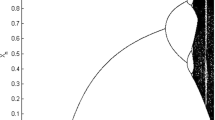Abstract
A brand new constructive data compression algorithm is considered. The model’s basic elements are indicated. Data transformation is carried out on the basis of three parameters using binary and decimal numeration systems. Methodical validation of data packing procedures is provided in a generalized form. Step-by-step structural description of the designed model is presented, along with schemes of the logging mechanism and interaction of the algorithm’s main parts. The problem of combining the universalism principle with supercompression of digital information is approached. Moreover, the model operates in modes of both single and multiple application of the same crypto-graphic scenario. A brief analysis of the model under extreme loads with and without considering the decoding log capacities and stabilizing bit array is carried out. The algorithm’s excesses and their effect on data coding and decoding processes efficiencies are discovered. Positive and negative aspects of the introduction of log and stabilizing bits into data compression process are indicated. The concept of information’s critical volume, which specifies the algorithm’s operation in the cryptographic generator mode, is defined.
Similar content being viewed by others
References
Semenyuk, V.V., Ekonomnoe kodirovanie diskretnoi informatsii (Economical Coding of Discrete Information), St. Petersburg: SPbGITMO (TU), 2001.
Shannon, C.E., A Mathematic Theory of Communications, Bell Syst. Tech. J., 1948, vol. 27, no. 7, pp. 379–423, no. 10, pp. 623–656.
Russ, J.C., The Image Processing Handbook, New York: CRC Press, 2002.
Costanzo, A., Robinson, D., and Ullmann, R., Encoding Header Field for Internet Messages, Network Working Group J., 1993.
Kou, W.K., Digital Image Compression, Washington: Springer, 1995.
Huffman, D.A., A Method for the Construction of Minimum-Redundancy Codes, Proc. of IRE, 1952, vol. 40, pp. 1098–1101.
Ziv, J. and Lempel, A., A Universal Algorithm for Sequential Data Compression, IEEE Trans. Inform. Theory, 1977, vol. 23, pp. 337–343.
Welch, T.A., Technique for High-Performance Data Compression, IEEE Computer, 1984, vol. 17, pp. 8–19.
Rissanen, J. and Langdon, G.G., Arithmetic Coding, IBM J. Res. Develop., 1979, vol. 23, pp. 149–162.
Stout, Q.F., Improved prefix Encodings of the Natural Numbers, IEEE Trans. Inform. Theory, 1980, vol. IT-26, pp. 607–609.
Kasumov, N.K., The Constructivism Concept in Supercompression Processes for Content of Various Formats, Izv. Nats. Akad. Nauk Azerb., 2004, vol. 24, no. 3, pp. 30–34.
Kasumov, N.K., Three-Factor Coding Model as the Lossless Content Compression Guarantee, Avtomat. Vychisl. Tekh., 2007, no. 5, pp. 77–82.
Author information
Authors and Affiliations
Corresponding author
Additional information
Original Russian Text © N.K. Kasumov, 2010, published in Avtomatika i Vychislitel’naya Tekhnika, 2010, No. 5, pp. 42–52.
About this article
Cite this article
Kasumov, N.K. The universal coding method in the data compression algorithm. Aut. Conrol Comp. Sci. 44, 279–286 (2010). https://doi.org/10.3103/S0146411610050056
Received:
Published:
Issue Date:
DOI: https://doi.org/10.3103/S0146411610050056




